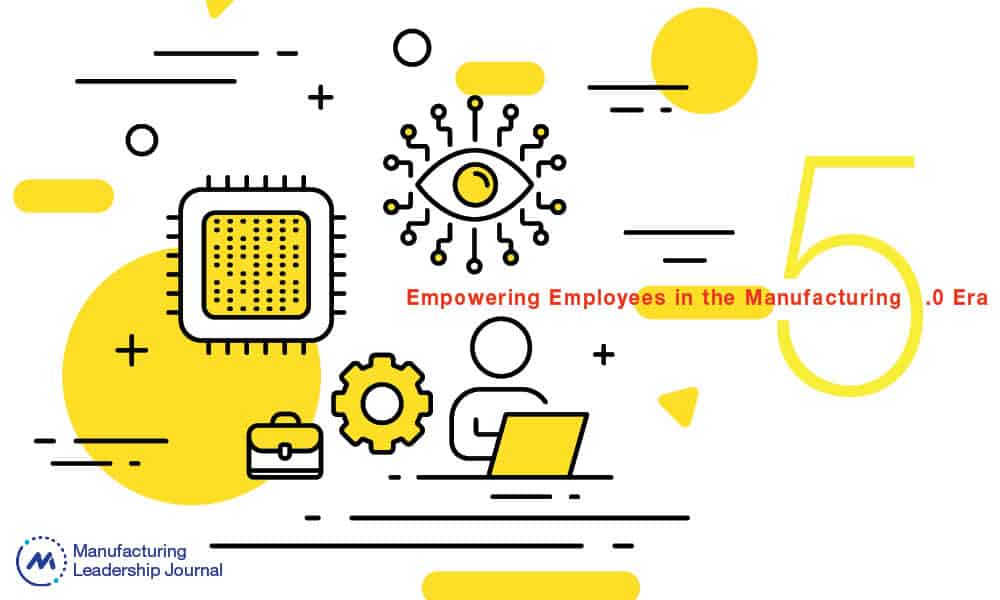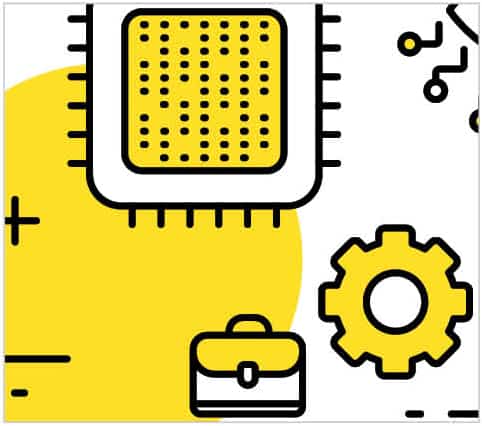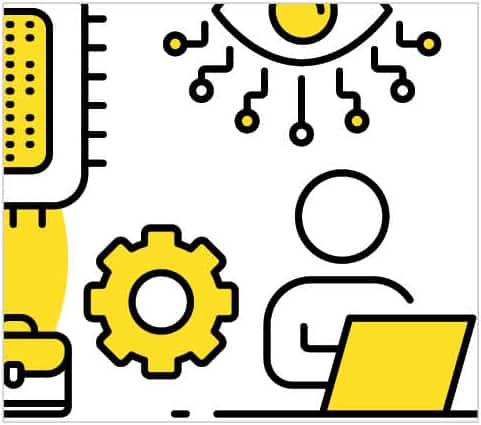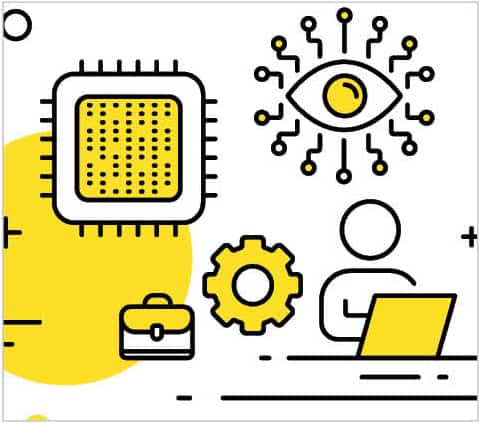Empowering Employees in the Manufacturing 5.0 Era

Transformational success depends on developing effective workforce strategies to prepare employees for a world of closer human/machine collaboration.

TAKEAWAYS:
● The constant flow of data from converged IT and OT systems helps employees identify potential bottlenecks and optimize operational efficiency.
● As the demand for skilled manufacturing workers increases, companies are exploring alternatives to traditional education and apprenticeships, such as on-the-job training for high school students.
● To appeal to Millennials and Gen Z, manufacturers must effectively communicate their mission and culture, emphasizing their products’ societal benefits, commitment to sustainability, and social responsibility.
The manufacturing landscape is undergoing a massive transformation driven by global changes, differences in work ethic, and rapid technological advancements. Gartner research shows that 80% of CEOs are increasing digital technology investments to counter current economic pressures, including inflation, scarce talent, and supply constraints. As a result, companies must focus on leadership, organization, culture, and people to thrive in this new era, ensuring a collaborative and innovative workforce.
Understanding the essential aspects of the upcoming era of Manufacturing 5.0, the importance of involving employees in change management, adapting to evolving workforce needs, and fostering a culture that attracts the younger generation, are now critical for manufacturers.
Manufacturing 5.0
Manufacturing 5.0 focuses on reintroducing the “human touch” to modern manufacturing processes and systems. While Manufacturing 4.0 heavily relies on digitization, connectivity, and automation technologies often replacing human tasks, Manufacturing 5.0 recognizes the importance of human skills, creativity, and decision-making in the digital transformation process. It emphasizes the collaboration between humans and machines, leveraging cognitive technologies like AI and ML to augment human capabilities rather than replace them. The goal is to create more meaningful and satisfying work experiences while harnessing the benefits of these advanced technologies to create a more flexible, adaptive, and sustainable manufacturing environment. Overall, Manufacturing 5.0 represents a paradigm shift in the manufacturing industry by emphasizing the symbiotic relationship between humans and machines, leveraging advanced cognitive technologies in new ways, and focusing on agility, sustainability, and data-driven decision-making.
The Changing Role of Employees
The need for proficient manufacturing shop floor employees has surged, prompting companies to investigate alternatives to conventional education and apprenticeships. One such alternative is on-the-job training. The effectiveness of this approach in countries like Germany has inspired other nations to contemplate implementing similar strategies. On-the-job training provides hands-on experience and skills, allowing employees to adapt quickly to the ever-changing requirements of the manufacturing industry.
Shop floor employees today need to comprehend and utilize the analysis of the growing volumes of shop floor information, in conjunction with input from advanced information technology systems that drive demand, to make crucial and timely decisions. They must understand the business more deeply than merely executing a manual task. Improved, straightforward, and seamlessly integrated information facilitates real-time data, analytics, and insights, empowering shop floor employees to make more data-driven decisions, optimize operations, and reduce downtime.

“The importance of involving employees in change management, adapting to evolving workforce needs, and fostering a culture that attracts the younger generation, are now critical for manufacturers.”
There are a number of key factors to address in this digitally enabled employee transition.
Demographic Shifts: The aging population and the retirement of experienced workers in many countries have exasperated the skills gap within the manufacturing sector. This change has intensified the demand for skilled labor, driving companies to devise new methods to train and educate their shop floor workforce. A 2020 report by the World Economic Forum predicted that 50% of employees worldwide will need reskilling by 2025, emphasizing the significance of inventive and flexible training models to keep pace with the rapid transformations in the manufacturing sector.
COVID-19 Influence: The pandemic disrupted traditional educational institutions, hastening the adoption of online and remote learning. This led to a re-examination of formal education and training models as the manufacturing sector seeks pioneering approaches to equip workers with the skills needed to face industry challenges.
Economic Hurdles: Global economic difficulties have also resulted in an increased emphasis on efficient and effective workforce development strategies. Companies are searching for cost-effective methods to train and upskill their shop floor employees, making on-the-job training an appealing option.
Bridging the IT/OT Gap: The expectations and skills of manufacturing employees are rapidly evolving as the world transitions to Manufacturing 5.0 and to the world of Open AI. Substantial modifications in plant floor Operational Technology (OT) are necessary to enhance productivity. Integrating the shop floor with Information Technology’s (IT) back office has become critical in informing decision-making processes. This convergence is the bedrock of adopting various advanced technologies, including Artificial Intelligence (AI), automation, sensors, and computer vision, to improve worker safety and overall transformation and innovation. As the world of manufacturing undergoes this transformation, organizations must actively involve their employees to upskill rather than cross-skill to bridge this gap. Coupling technical skills with soft skills is now required to achieve transformation success.
What has changed?
Well, everything. While on one end of the spectrum, we have the zenith of technologies waiting to be embraced; while the other end is still struggling with legacy systems and companies blindly investing in technologies with little to no ROI. While there is a massive shift to develop hyper-automated factories, many companies still need a structured plan to drive this transition.
Not only that, but the challenge today is also to prepare, and have a plan, to replace the aging workforce. Next, companies need to understand and identify what percentage of its workforce are replaceable with robots or collaboration bots and which human repetitive tasks can be replaced.
Fifty three percent of respondents to a recent TalentNeuron survey for example, said that the inability to identify needed skills was the No. 1 impediment to workforce transformation. Thirty-one percent reported that they also need help to identify those market-leading skills.
Fuelling Workforce Transformation
However, as robotics, automation, and AI continue to advance, they will not eliminate the need for labor on the shop floor. Instead, they will transform the kind of workforce required. According to World Economic Forum’s “Future of Jobs Report 2020” that gathers the insights from the largest companies worldwide on the changing nature of work; by 2025, humans and machines would share equal task loads, with 85 million jobs worldwide being displaced by automation and AI, while 97 million new roles will be created. This means an increase in labor as more new jobs emerge.
The rapid development of robotics, automation, and artificial intelligence (AI) has led to more sophisticated machines that can perform tasks previously handled by humans. This caused a shift in the labor market, where new skills and expertise are required to keep up with these changes. While AI could increase labor productivity there is a need to upskill and reskill shop floor workers to adapt to the changing labor market.

“Improved and seamlessly integrated information facilitates real-time data, analytics, and insights, empowering shop floor employees to make more data-driven decisions.”
As machines become more capable of performing tasks, there is also an increasing demand for shop floor workers who can manage, develop, and maintain these systems. This transformation in the labor market signifies an evolution in the skill set needed for employees. Shop floor employees now require specialized training in robotics, automation, and AI to develop the skills necessary to work with these technologies. Much of the activity will be provided by machine manufacturers, while additional training can be accessed online.
Embracing Change and Sustainability
The manufacturing industry must adapt to the changing workforce, technology, and global landscape challenges. As a result, companies must foster a culture of continuous learning, innovation, and adaptability, prioritizing trust and employee well-being.
As the workforce becomes more diverse, companies must also ensure that their culture and policies are inclusive and provide equal opportunities for all employees. By embracing diversity and promoting inclusion, companies can tap into their employees’ unique skills, perspectives, and experiences, leading to improved innovation and performance.
As manufacturing undergoes a technological revolution characterized by adopting Manufacturing 5.0, automation, and digitalization, companies must invest in upskilling and reskilling their workforce to adapt to new technologies and processes to stay competitive. This requires fostering a continuous learning and innovation culture, where employees are encouraged to keep up-to-date with the latest industry trends and developments.
As the global market becomes increasingly interconnected, manufacturers face increasing competition, economic fluctuations, and regulatory pressures. Companies must develop strategies to navigate these challenges while maintaining sustainable practices considering environmental, social, and economic factors.
Companies should also prioritize confidence and employee well-being by providing supportive work environments, encouraging open communication, and offering resources for mental and physical health. A strong focus on employee well-being can improve productivity, retention, and company performance.
Finally, as shop floor employees reduce manual tasks and become machine managers using computers, operational technology, and information technology, their ability to work remotely will improve. That being said, envisaging a hybrid work model for shop floor employees can be challenging because of the nature of the work and the need for continuous production. Supervisors are already using phones to keep track of machine operations over multiple shifts, especially in process manufacturing and, more often, in discrete Manufacturing, where machine productivity requires 24/7 operation. Implementing periodic shifts for shop floor employees can help the manufacturing industry transition to a hybrid work culture.
Change Management, Done right.
As manufacturers begin to navigate these fundamental operational and workforce changes, there some basic guidelines that may help leaders adopt more enlightened workforce cultures.
Open Communication: The successful implementation of advanced technologies largely depends on the involvement of employees in change management. Therefore, organizations must focus on a culture of open communication. Shop floor employees are often the best source of information on productivity and quality improvements. Companies should encourage employees to share their thoughts, concerns, and ideas. This establishes a sense of ownership and commitment among the workforce. Based on research conducted by McKinsey, the likelihood of a successful transformation increases 5.8 times when CEOs convey a persuasive and overarching narrative of change. Furthermore, the chance of success rises 6.3 times when top executives disseminate consistent and unified messages about the change initiative.

“Younger employees are often passionate about environmental sustainability and may be more inclined to work for companies committed to reducing their ecological footprint.”
Reward Cross-Skilling: Organizations must invest in training and reward skill development programs to equip their workforce with the knowledge and skills required to adapt to higher analytical skills driven by new technologies. This enhances employee capabilities and ensures a smooth transition to the new systems.
Leadership through Mentorship: Companies should also provide their employees with the necessary support and resources during the transition. This includes mentorship, guidance, and the availability of resources to address any challenges or issues that may arise.
Internal Communication: Organizations must emphasize adapting to new technologies and their potential benefits as part of their internal communications strategies. This can be achieved through awareness campaigns, workshops, and presentations highlighting the value these technologies bring to the organization regarding efficiency, productivity, and safety.
A study conducted by the Boston Consulting Group found that organizations that successfully implemented change initiatives like these were 3.5 times more likely to effectively communicate the benefits of change to their employees, resulting in increased employee buy-in and support for the changes.
Attracting a Younger Workforce
The younger generation, often called millennials and Gen Z, tends to prioritize working for companies and non-profits that have a clear, positive impact on society. To appeal to this demographic, manufacturers must communicate their mission and culture effectively, emphasizing how their products contribute to the greater good.
A strong mission statement that reflects the company’s core values and goals can resonate with younger employees, who are often driven by a sense of purpose in their work. This generation seeks to make a difference, and by aligning the company’s mission with societal benefits, manufacturers can create a more attractive workplace for young professionals.
A company’s culture is the set of shared values, beliefs, and practices that shape the work environment. A positive, inclusive, and empowering culture can be a significant draw for younger employees who prioritize work-life balance and personal development. In addition, manufacturers can improve employee satisfaction and engagement by promoting a healthy work culture.

“Companies should encourage employees to share their thoughts, concerns, and ideas. This establishes a sense of ownership and commitment among the workforce.”
Younger employees are often passionate about environmental sustainability and may be more inclined to work for companies committed to reducing their ecological footprint. Manufacturers can appeal to these values by adopting eco-friendly practices, investing in green technologies, and promoting transparency around their sustainability initiatives.
The younger workforce is also attracted to companies that take an active role in addressing social issues and contributing to the communities in which they operate. Manufacturers can showcase their commitment to social responsibility by engaging in philanthropy, volunteer programs, and community partnerships. These initiatives help attract and retain young talent and enhance the company’s reputation and brand image.
The Way Ahead
The transition to Manufacturing 5.0 has brought about significant changes in the manufacturing landscape, requiring companies to adapt to evolving technologies, workforce demographics, and global challenges. To thrive in this new era, manufacturers must involve their shop floor employees in change management, invest in training and skill development programs, and foster an open, collaborative, and innovative culture. In addition, manufacturers can attract and retain the younger workforce, who drive innovation and success in the industry by embracing diversity, prioritizing employee well-being, and adopting sustainable practices. M
About the authors:

Neha Aggarwal is Assistant Vice President and Head, Vertical Strategy Group at Birlasoft.

Paul Menig is a Senior Business Consultant at Birlasoft.
